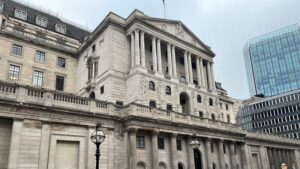The continued upward march in inflation over the last 12 months or so has wreaked havoc within fixed income markets and performance overall was dire in 2022, writes Square Mile’s Chris Fleming (pictured).
In the UK, the gilt market experienced further misery in the wake of a disastrous ‘mini-budget’ which sent the FTSE Actuaries UK Conventional Gilt Index into a tailspin, losing some 10% in a matter of two days. Markets have recovered since then, with investors viewing the fiscally conservative pairing of Sunak and Hunt more favourably than their more reckless predecessors. Nonetheless, this event serves to highlight just how jittery sentiment is among bond investors.
Traditional portfolio construction holds that bonds play an important role as a diversifier, complementing equity exposure while offering a steady income stream. This complementary relationship has proved to be a winning combination in the past. When economies go into a recession, investors typically sell down their riskier assets such as equities and move into perceived safer havens.
Bonds have historically sat in this category, providing ballast within a portfolio. Not so, however, in inflationary environments. High inflation is the nemesis of conventional bonds as it erodes the value of their coupons and capital repayment in real terms. It will come as no surprise, therefore, that as inflation has reached record highs, bonds have offered paltry protection as equity markets have tumbled.
The experience of the last 12 months has led many investors to question an allocation to bonds as a hedge against equity market exposure with many declaring the traditional 60/40 model of equity and bond exposure to be dead. However, it is important to remember that not all bonds are created equal. There are those whose interest and capital repayments are linked to inflation; some pay interest at floating rates; others have ultra-short durations cushioning them against interest rate risk. And there are those that offer exposure to other currencies and levels of creditworthiness. This creates a significant variance in risks and yields available.
Despite the headwinds bonds have faced, their inclusion within a balanced portfolio is still worth consideration, and it is perhaps even more compelling given their recent poor performance and the more attractive yields that are currently available. Risks do remain and yields may have further to rise, but at their present levels bond markets merit a second look.
Why might this be the case? First, there are signs that concerns over inflation may soon be superseded by fears of a global recession. This may well mean that investors will find the traditional safe haven characteristics appealing once more in the face of an equity market sell-off.
With 10-year gilt yields standing at 1% as 2022 opened, the prospect of them falling further and therefore their prices to rise was limited. Those yields are now nearing 3.5%, meaning that the potential for profit is much enhanced. While the expectation is that inflation, the nemesis of fixed income assets, will remain around 10% over the coming months, longer term the picture is different. Market expectations of inflation over five and 10-year periods are both below 4% which means that 10-year gilts are close to offering a real return after inflation for the first time in several years.
The story is similar for the sterling corporate bond market. This is not only because gilt yields have increased but also because credit spreads have widened from about 1-2% since the beginning of 2022, as measured by the ICE BoA Sterling Corporate Bond Index. The average yield of high-quality sterling corporate bonds started 2022 at 2%; It is now just over 5%, which is a compelling return for such a relatively low risk asset.
A similar opportunity set is available in markets outside the UK. Areas of the market which are typically higher yielding, such as emerging market debt and corporate debt lower down the quality spectrum, represent a diverse and disparate spread of issuance but have nonetheless been caught up in the indiscriminate sell-off in fixed income assets. As an illustration of this, the US high yield bond market as a whole is yielding somewhere in the region of 9%. Investing in emerging market debt is not without its caveats, particularly when that debt is dollar denominated, but there are attractive pickings in local currency debt markets for those with the knowhow to navigate them.
There were no easy wins for investors in 2022 and bond managers have perhaps faced disproportionate headwinds relative to those investing in other asset classes. We would argue, however, that now is not the time to write off fixed income, particularly since there are indications that the tide is once again turning in its favour, in some corners of the market at least.
This article was written for Portfolio Adviser by Chris Fleming, investment director, Square Mile Investment Consulting and Research







